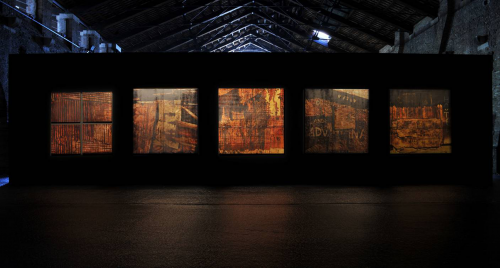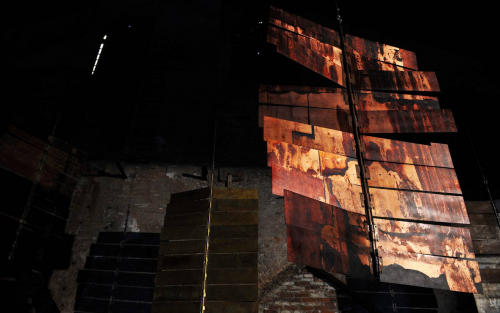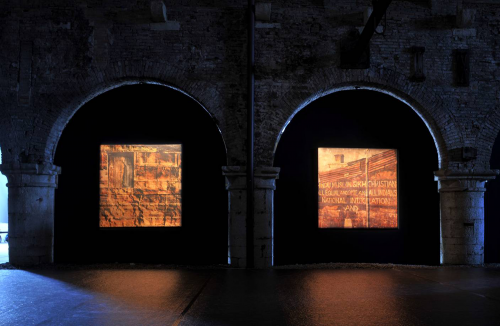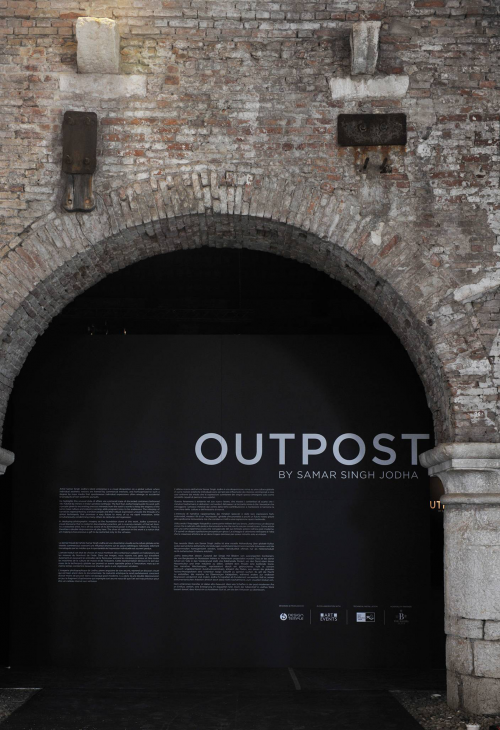
under the direction of lead curator dr erwin viray, head of pillar, architecture and sustainable design at singapore university of technology and design, no more free space? exhibition responds to singapore’s unique environment: densely populated, multi-cultural, multi-ethnic island city-state. the exhibition comprises twelve singapore-based architecture projects, spanning residential, commercial, private and public buildings, each demonstrating how to turn constraints into opportunities for ‘free space’ by re-imagining what a highly compact city can be. each project incorporates light, air, greenery or water to create oasis and delightful free spaces in dense urban environments, bringing joy and connectivity to the community. the centerpiece of the exhibition will be an interactive installation – an ethereal cloud of handcrafted acrylic knots with multi-sensory sounds, light and image projections, re-creating the experiences of singapore for the audience. singapore pavilion is commissioned by the designsingapore council of the ministry of communications and information and the urban redevelopment authority.
‘no more free space?’ asks the pavilion of singapore at the 16th international architecture exhibition la biennale di venezia

curated by xristina argyros and ryan neiheiser (neiheiserargyros.com), and entitled the school of athens the project examines the architecture of universities and academia around the world, focusing on the common spaces outside of the classroom, and addressing their importance as informal spaces of debate, exchange and ultimately, learning. the curatorial duo reimagines the greek pavilion as its own kind of learning ‘freespace’, adopting the architectural trope of the stepped landscape. dotted around the stepped elements, almost 60 3-d printed architectural models of common spaces within academic buildings, both realized and non, will be on display. the models include spaces across the five continents, and across history, in recognition of the common space – un-programmed spaces for impromptu conversation, casual gossip, heated debate, pop-up lectures networking and informal teaching – as vital to academia’s continued relevance and vibrancy. spaces that demand and deserve intelligent critique and update. the project is delivered in collaboration with architectural courses at architectural association in london and the university of athens.

above> ballynahinch market house in county down, northern ireland. courtesy © neil clifton
the exhibition curated by six young architects and designers, examines the role of markets in rural irish communities, their gradual demise and their importance for economic and social engagement. during the biennale the pavilion will be transformed into a rural irish market square, complete with market stalls, goods, soundscape and a daily newspaper with a range of contributors. after the biennale the exhibition will return to ireland touring small towns around the country gathering new stories and participants.
 click > enlarge
click > enlarge
Celebrated Indian photographer and installation artist Samar Singh Jodha will present his latest work at the Venice Biennale 2013. Jodha has been working on global issues with his art in Asia, Africa and the Middle East for the past two decades. At the 2012 Olympics he had a 40-foot installation on Bhopal-Union Carbide disaster at the Amnesty International London.

A the core of Jodha’ art projects is an involvement at a community level – which includes capacity building issues such as education, rural forestry programs and the revival of traditional craftsmanship. Jodha’s obsession with the nomadic and tribal communities from China/ Burma and North East India began in 2003 then he undertook a road trip from Kunming in South West China through Burma into the North East borders of India. The route had long been shut down due to political reasons, and Jodha made several unsuccessful attempts to cover the length from China. He finally managed to complete his journey, by approaching it from both ends in 2005.



He began photographing & filming the vanishing Tai Phake tribe of 1500 Buddhists originating from Burma. He set up an education system, helping fund a monastery building project and revive traditional textile looms. On one of these many trips to this region, he stumbled upon the fascinating habitats of the miners in the North Eastern borders of India – sandwiched between Bangladesh, Burma and China. The magnificent metal structures that jutted into the lush and uninhabited landscape, were an unreal testimony to man’s will to survive.
Jodha’s latest body of work is the result of this photo research carried out in the past one decade in the mining communities of North East India. This poetic body of work – printed with archival inks on precious metal plates like Copper, Brass and Mild Steel – contrasts and blends pathos and beauty seamlessly. [ samar singh jodha ]
The Venice Biennale 2013 is the chosen platform for showing Outpost from 1 June to 24 November 2013. [ venice biennale 2013 ]










